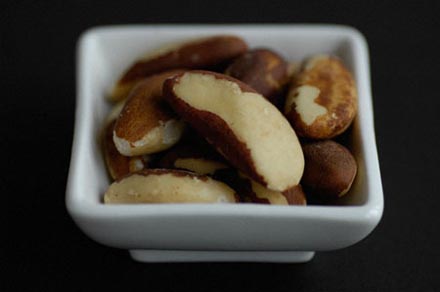One of us is addicted to food photography – looking at food images and dabbling in making them:

(This image of ours appeared in the Observer Food Magazine and probably represents the pinnacle of our food photography career)
Of course a lot of people like looking at images of food but that’s mainly because the image creates an anticipation of its texture and taste, we don’t know of many who look at in with an almost academic interest (which must say something about us, probably not favourable).
One point for discussion is the generic shallow depth of focus style that every image of prepared dishs or ingredients has – just one part of the picture in sharp focus and the rest blurred. How has this arisen and why is it an almost completely universal style that has stayed the same for the last 10 years? It is something to do with the way we perceive food when we look at it is real life? We know that smell and taste are the two most primitive, in evolutionary terms, senses and perhaps when faced with food they can overwhelm our visual sense to produce something that looks a bit like the shallow depth of focus, an incomplete picture. Perhaps other evolutionary patterns of attention also include one that looks very carefully at one part of food to assess it suitability for eating? Perhaps it is just a photographic fashion that everyone has adopted because they can’t think of anything more interesting?
One thing that has been changing in food photography over the past couple of years is the amount of light and the overall colour palette. The lighting used to be bright veering towards overexposure but recently food pictures have generally become darker, often with dark rather than white background. There has also been a trend for darker colours in food containers and accessories, rich browns and burnt oranges predominating. These all combine to make the pictures reminiscent of the Old Dutch masters still lifes of food.



 Posted by foodmatters
Posted by foodmatters